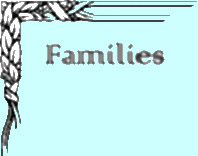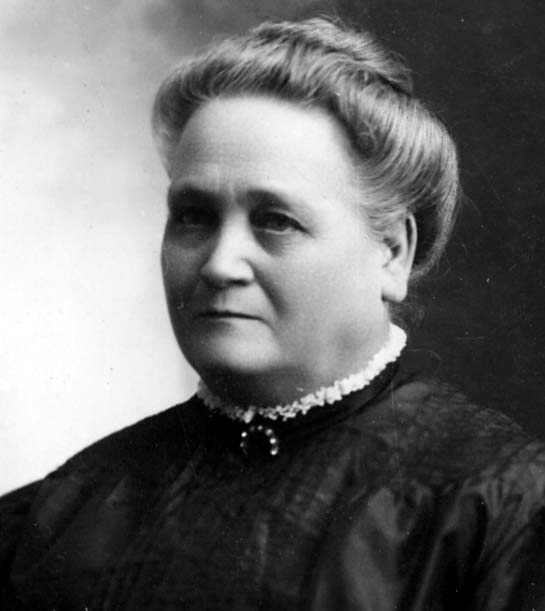
Rebecca Deseret Dutson Information and Photos
Home
Histories
Charts
Photos
Maps
Restricted
News
Info
Contact
  | John William Dutson   and Elizabeth Jane Cowley  |

Rebecca Deseret Dutson Jacobson
History and Information
Rebecca was born 28 Jan. 1855, in St. Louis, Missouri, to John William and Elizabeth Jane Cowley Dutson. She was the third child of a family of ten. The first two sons were born in St. Louis, but both died very young and were buried in Weslean Cemetery, in St. Louis.
Rebecca left St. Louis at the age of two years with her parents in the month of June, 1857, in company with other Saints, making their trek westward to Zion. She was too young to realize the many hardships and trials her parents encountered while crossing the plains. They related these to her many times during her late childhood days. Her children and grandchildren enjoyed hearing her relate many interesting pioneer stories while living in St. Louis, and while crossing the plains.
The family reached the Valley, 20 Sep. 1857. They were twelve weeks, crossing the plains. An Uncle, Alexander Melville, came to Salt Lake to help move her family down to Fillmore. Rebecca's Father was called to Fillmore to help settle the town in the fall of 1858. The family lived with Rebecca's Grandmother, Ann Dutson Carling, while her father built a house for them. The struggle was hard in Fillmore, trying to support the family. The settlers made their own clothing and most of their own shoes. They spun wool for thread to make cloth for clothing and yarn for stockings. They made wool bats for quilts. They made dyes for coloring cloth from Sage brush steeped down; also from dried Peach leaves and Rabbit brush. Blue Vitrol, was often used for dyes. Their only means of heat and light at night, was from their fireplaces, until they made tallow candles. Molasses was the only sweetening for their food and to preserve their fruits. Vegetables and fruits were the chief products raised. Rebecca enjoyed picking currants and wild berries. The men hunted deer and raised some of their meat. Pork scraps were rendered out for lard. Rebecca was baptized at eight years of age, in the Millstream at Fillmore. About that time, her Mother gave her a new dress that was the envy of all her friends. She made it of Factory, which she had dyed green and embroidery floss, she had spun by hand. It was then Rebecca had her first pair of ready-made shoes.
At the age of eight years, she worked for a Scotch lady, who paid her well and kept her in clothes. From then on she worked most of the time until she left Fillmore. Rebecca, now thirteen, attended Sunday School at 3 p.m. Her teacher was Elizabeth Carling.
Christmas was always a happy time. Rebecca usually got a pretty piece of material to embroidery, also needles and yarn. She loved to sew. The children's stockings were usually filled with Hickory Nuts, Walnuts, dried fruits and Molasses candy.
Grandmother, Ann Dutson Carting, a trained nurse, would go to the homes, when anyone was ill, taking her own prepared medicines made from herbs.
In 1871, Rebecca's Father, was called from Fillmore, by Bishop Thomas Callister, along with the Lymans, Finlinsons and others, to settle the small town of Oak Creek. Rebecca's Father was chosen assistant Superintendent. He was to organize a Choir and was sustained as Ward Chorister, 22 July 1878.
A small log house, owned by the Lovell family, used as a grainery, was cleared out, fixed up, and used as a dance hall. Rebecca was old enough to go to dances and many new dances were learned. Soon a one room church house was built. It was heated with a box stove, made of cast iron. It had a lid that slipped off the top, and large pieces of wood could be dropped into the stove. Church, school, dances and recreation were held in this one room building. Rebecca's Father, played his violin for the dances.
A young man working as a contractor in Leamington Canyon, building coal kilns, was asked to come and play for a dance in Oak Creek. He accepted and the music was fine, Father Dutson playing the violin and Ole Jacobson, the accordian. Ole Jacobson came over to Oak Creek, frequently, to play for the dances, and Rebecca had the privilege of meeting the talented, handsome young man from Brigham City.
While he was away working, Ole's Mother had moved down to Provo. When the coal kilns were finished, Ole got a job in Oak Creek building houses and furniture. Ole started dating Rebecca and she esteemed him as a man of good character and high ideals. He was of her church and her Father and Mother thought highly of him and approved their marriage plans.
Ole and Rebecca were married in the Endowment House in Salt Lake, 14 Mar. 1878. He built all the furniture to furnish their neat three room humble but happy log home in the East part of town. They were blessed with eleven children; five sons and six daughters. Ten of their children were born in this log home, with the eleventh child born in the new frame home they built just East of the log home. All their children were married in the Temple, all active in the church. Their home was a home of love, order, obedience, understanding and cooperation. In manhood and womanhood, the children well remember the advice and counsel they received from their parents while growing up. They tried to live up to the standard of life their parents had set through righteous and noble living.
Rebecca taught school from seventeen until she was married. She held many church positions, as President of Y.W.M.I.A., several years; First Counseler and President of the Primary, for Twenty-one years; Primary Stake Board for several years. Honorary Board Member, in appreciation of outstanding work in the Stake. She taught in Sunday School many years, Religious Class teacher in school, a member of the Relief Society and Ward Choir. She had a Camp in the Daughters of the Pioneers named after her, "Camp Rebecca."
She was a humble faithful wife and mother. Always had time to help others in sickness while rearing her large family. Her homemade medicines proved effective in cases of croup and bad colds. She and her husband raised their large family without a doctor in the home. Through their faith in God and His help through the Holy Priesthood, many sicknesses in their home and family were conquered. They lived close to their Heavenly Father and he heard their prayers and answered in time of need.
Rebecca was an excellent cook with lucious suppers for her hungry school children during those cold winter days. Her daughters were taught to be good cooks. She was also a good seamstress. She was an industrious and thrifty wife and mother who made clothing and knitted stockings for all her family. She was loved by all who knew her.
Rebecca and her husband took great pride in planting and caring for trees, shrubs, lawn and beautiful flowers in and around their home. She loved flowers and had them blooming the year round. This taught their children to appreciate the beauty of nature and the finer things in life.
Rebecca had many faith promoting incidents in her life. Ole raised vegetables and many kinds of fruit to sell to help support their large family. One summer Ole was in Provo working, the berries ripened and were ready for market. Rebecca and the children picked and crated them. She and her brother, Eddy, living near by, took the berries to the neighboring towns to sell.
Rebecca had instructed the children what to do while she was away. In Hinckley, at Bishop Wm. Pratt's home, he and B. H. Peterson were building. As Rebecca and Eddy drove through the big gate, a strong wind blew the gate against the wagon and team and stopped them dead still. The sudden stop threw Rebecca from the high seat of the wagon down behind the horses heels. She was a heavy woman and was badly bruised. Eddy thought her to be killed, falling so far, and one horse was bad to kick. In Bishop Pratt's home he and Bro. Peterson administered to her and after awhile she roused and soon was feeling better. She was advised to stay over night but Rebecca said she must go home to her small children. She was thankful to get back to her family and never felt any bad effects from the accident and said the Lord was with her and watched over her that day.
Another incident was when her son, Alfred, was very ill with Typhoid Fever. Ole and Rebecca thought he was better so Ole went to Provo to work. After he left Alfred became worse. His fever had turned to Pneumonia and he was in a dangerous condition and seemed to be dying. Rebecca was worried and strongly impressed to pray. She and all the children knelt by his bedside and offered a prayer to God for his recovery. Her prayer ending was, "But Thy will be done and not mine, Amen." Her prayer was answered and Alfred began to recover and continued to do so until he was well. Rebecca's children have always remembered that prayer. It instilled in their hearts a faith in their Heavenly Father and to know that God lives and hears and answers prayers that come from a sincere heart.
Rebecca's husband died seven years prior to her death, 10 Feb., 1930. She passed away on 2 Feb., 1937, at the age of eighty-two, after living a useful and active life.
--Maggie Ann Jacobson Lewis.